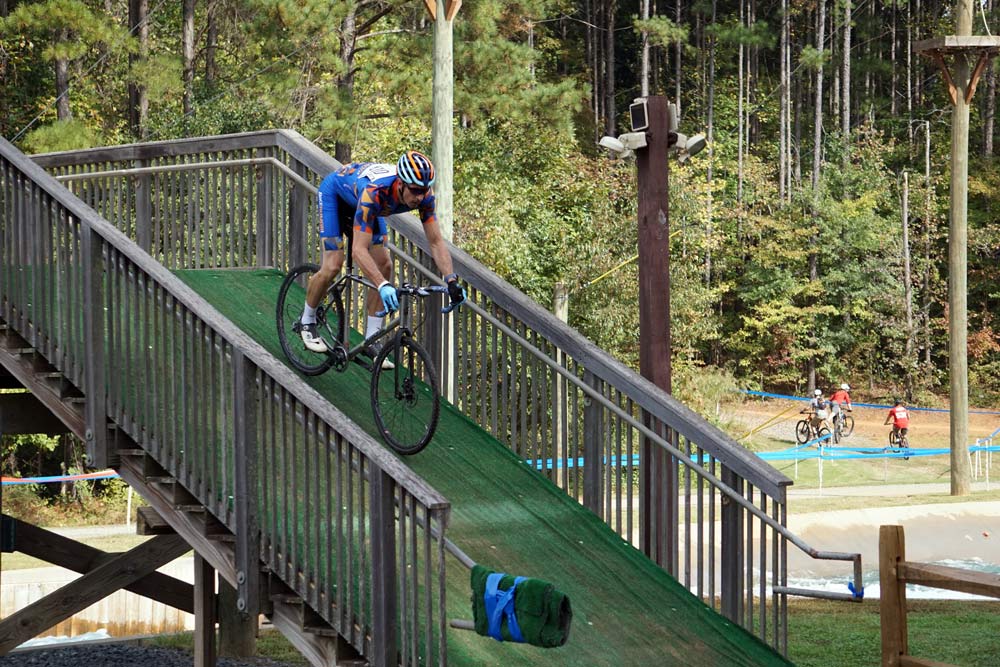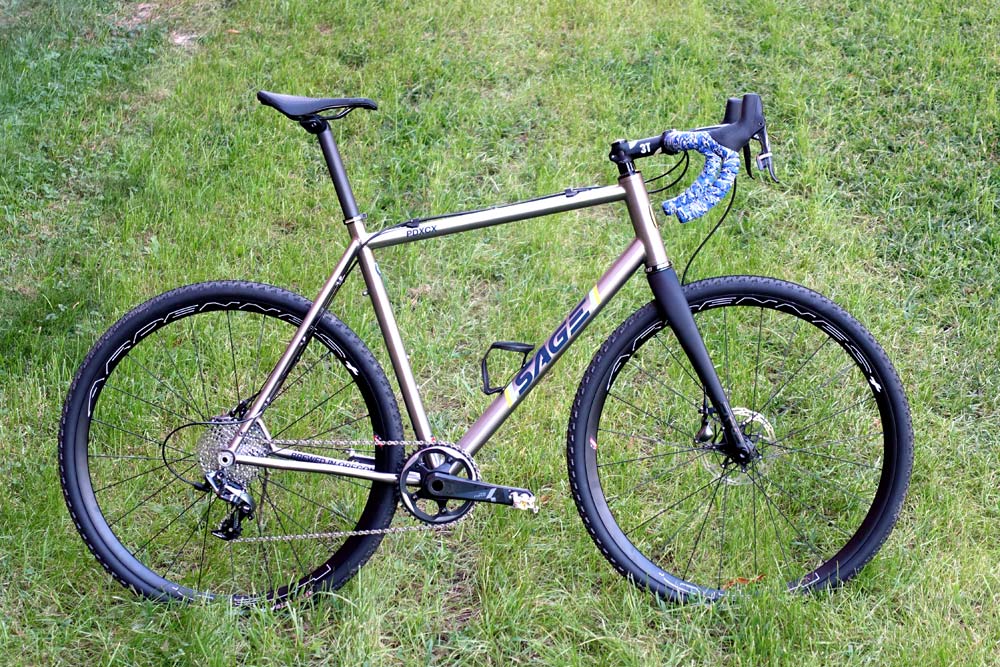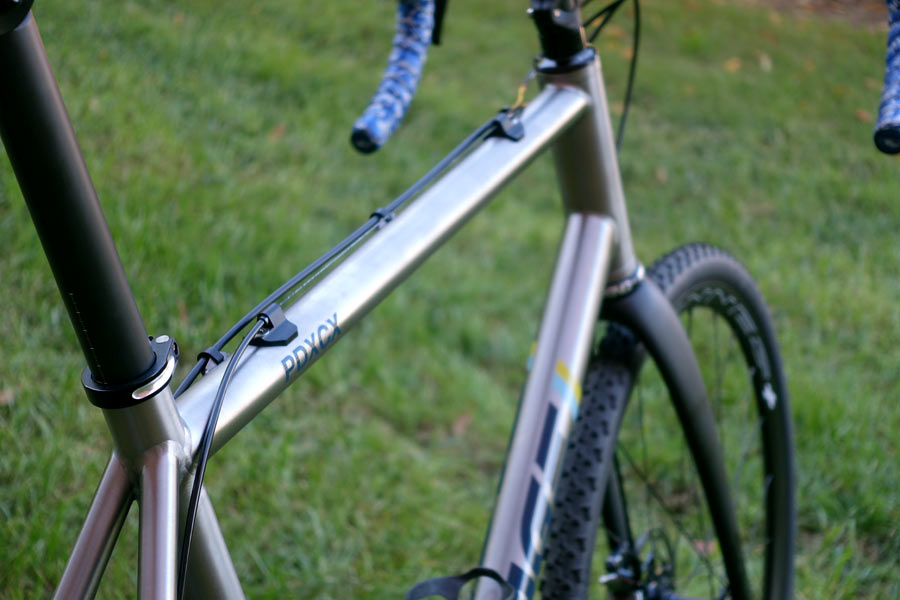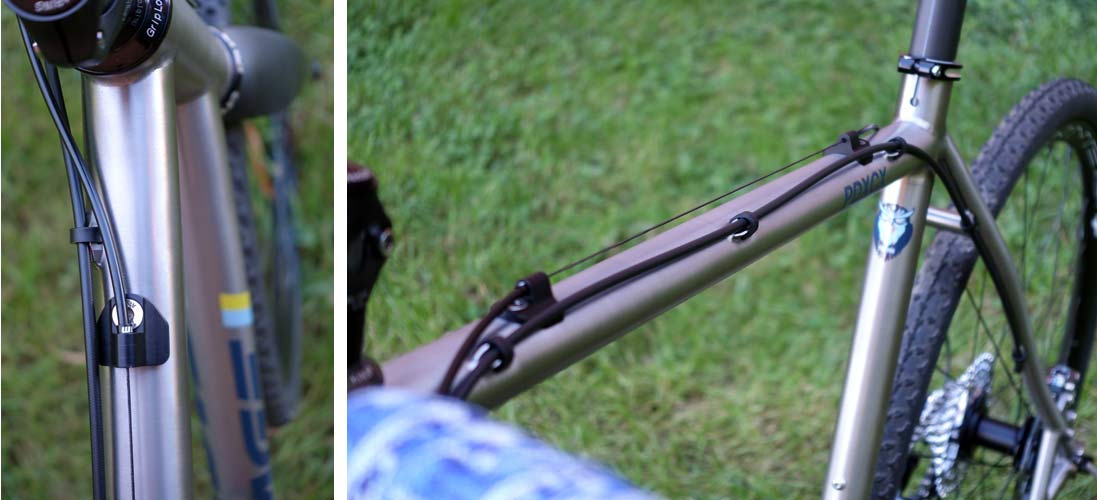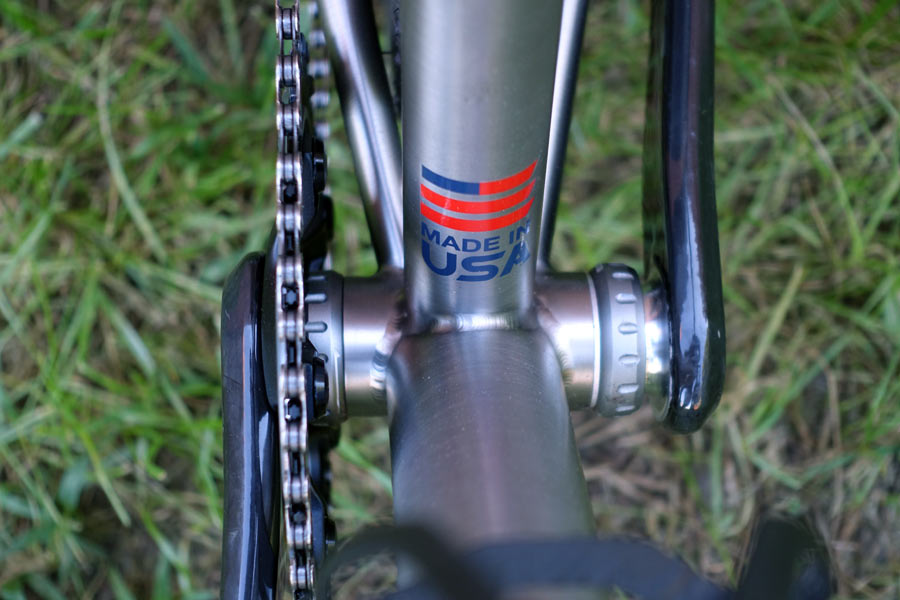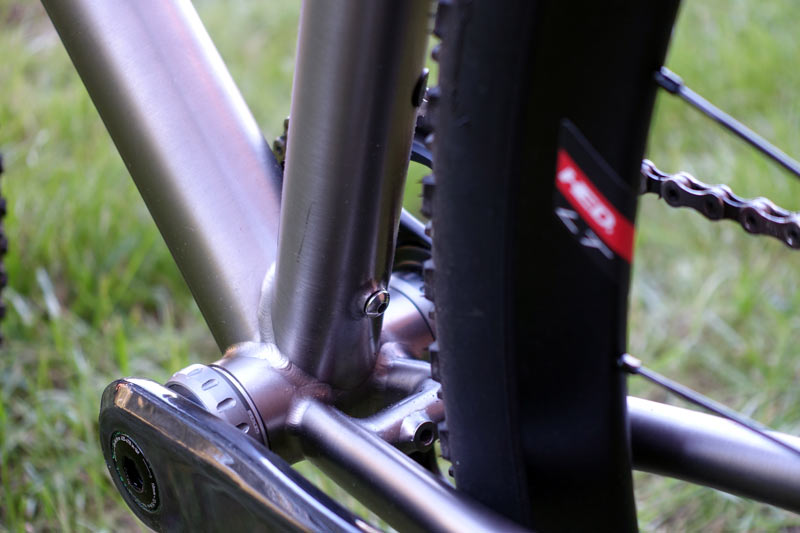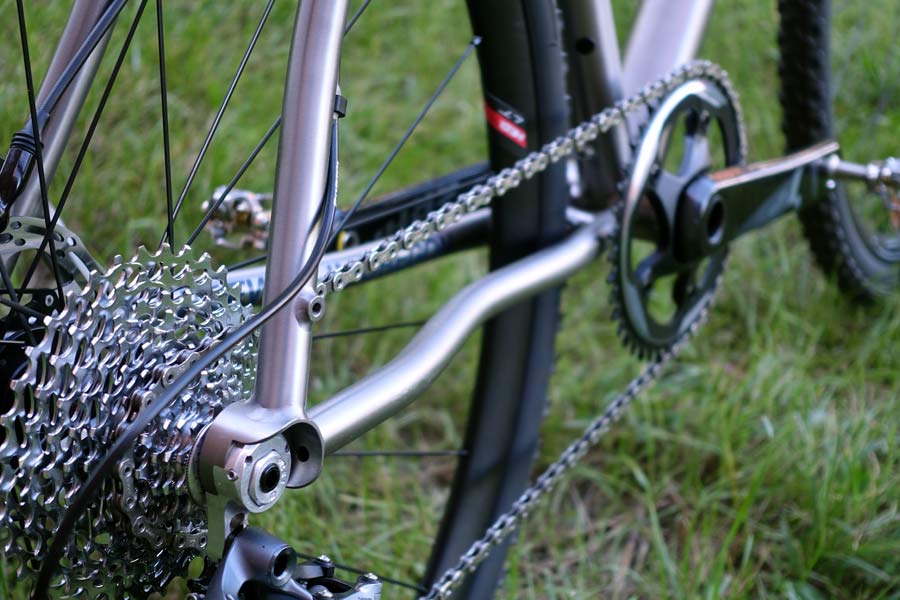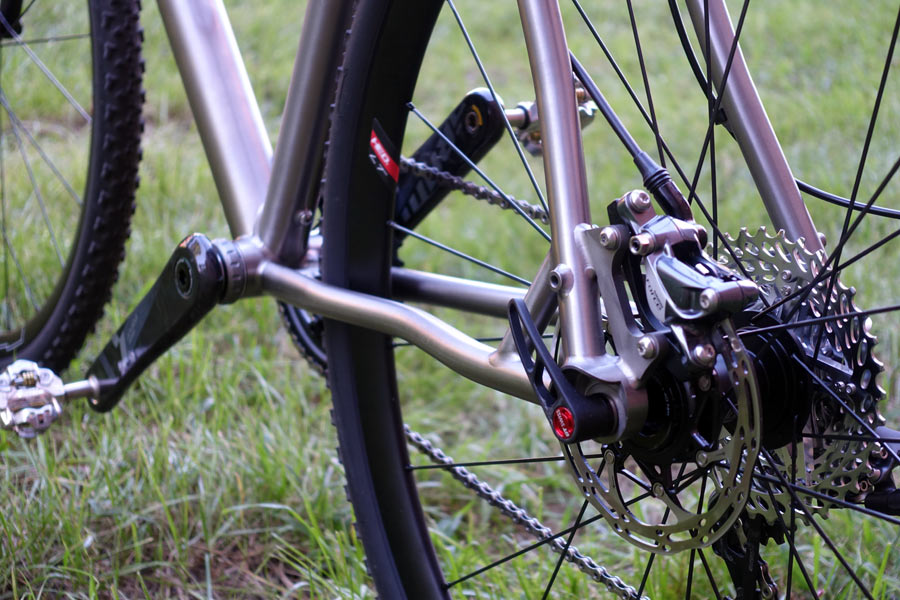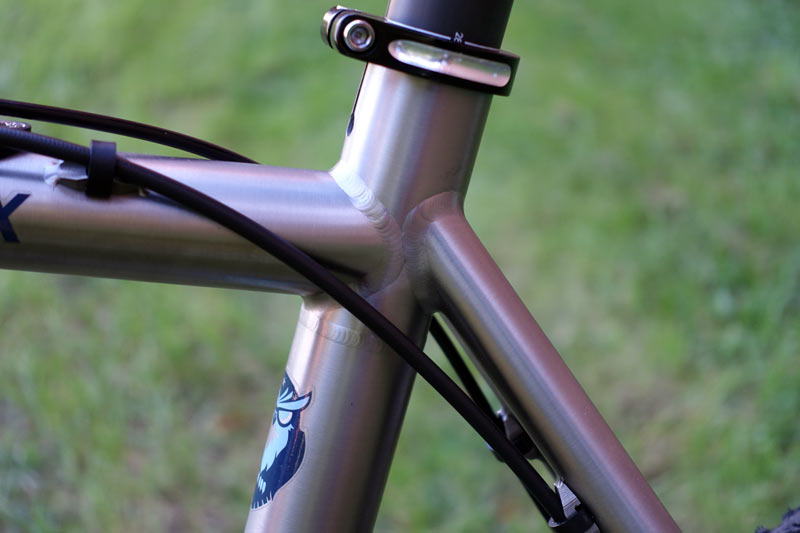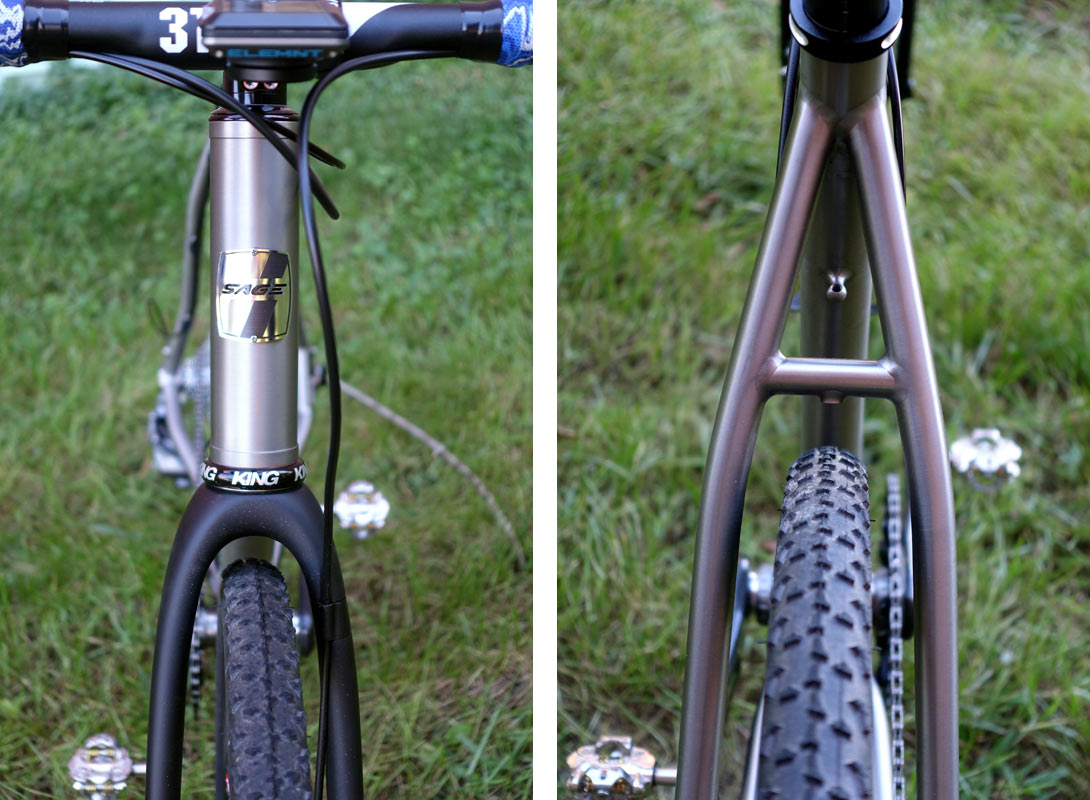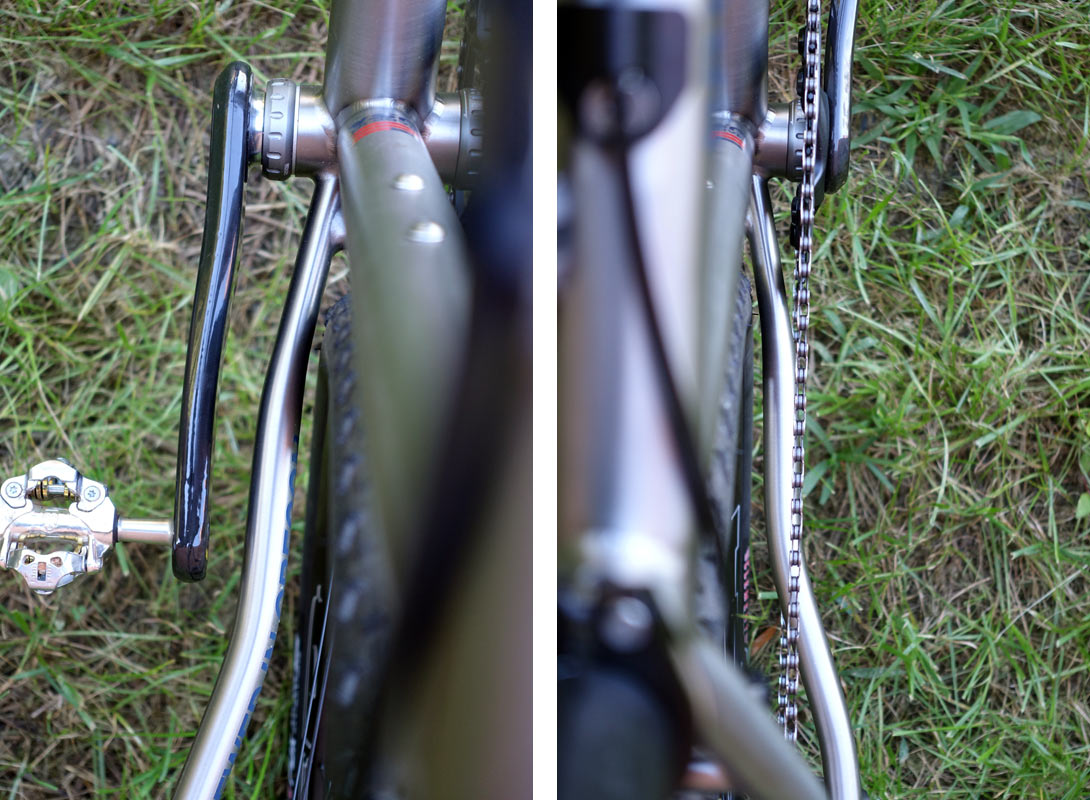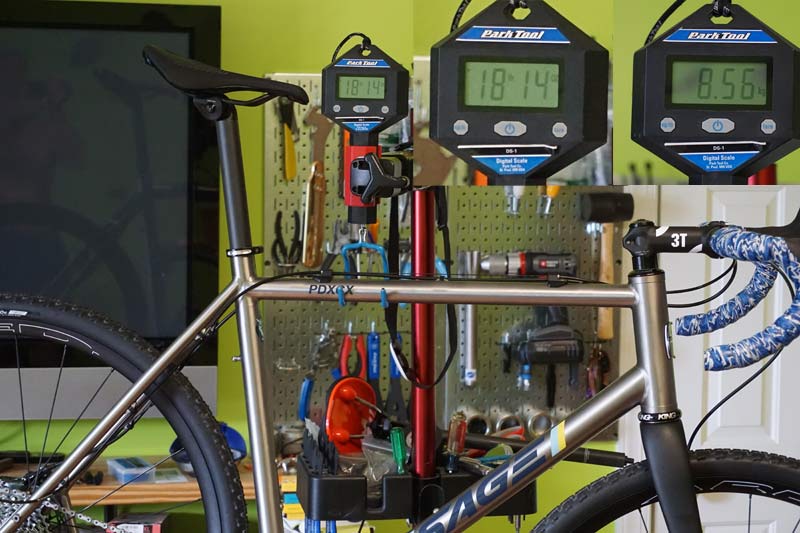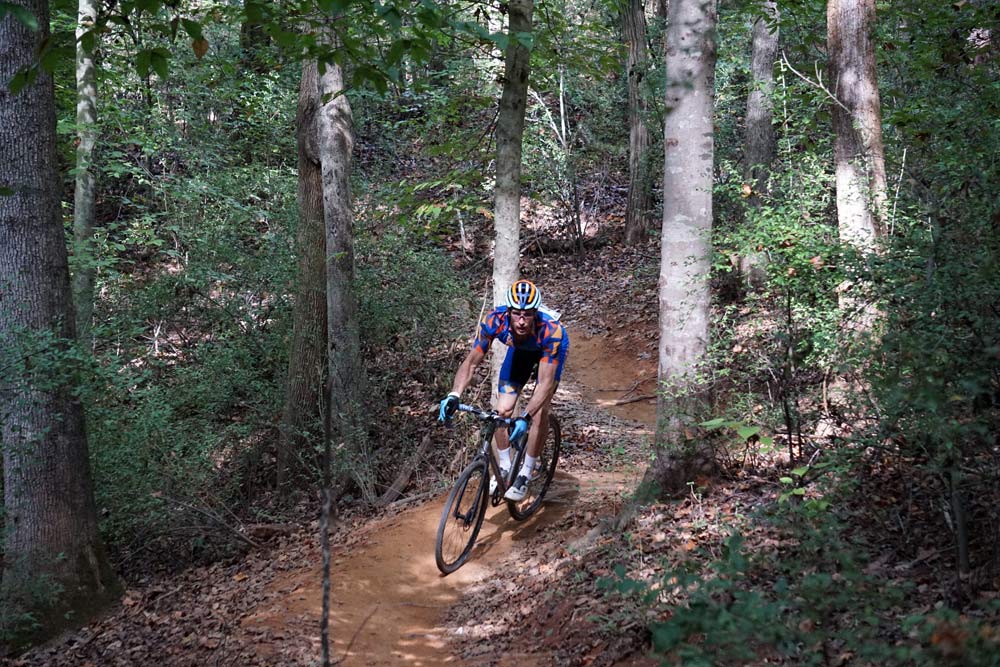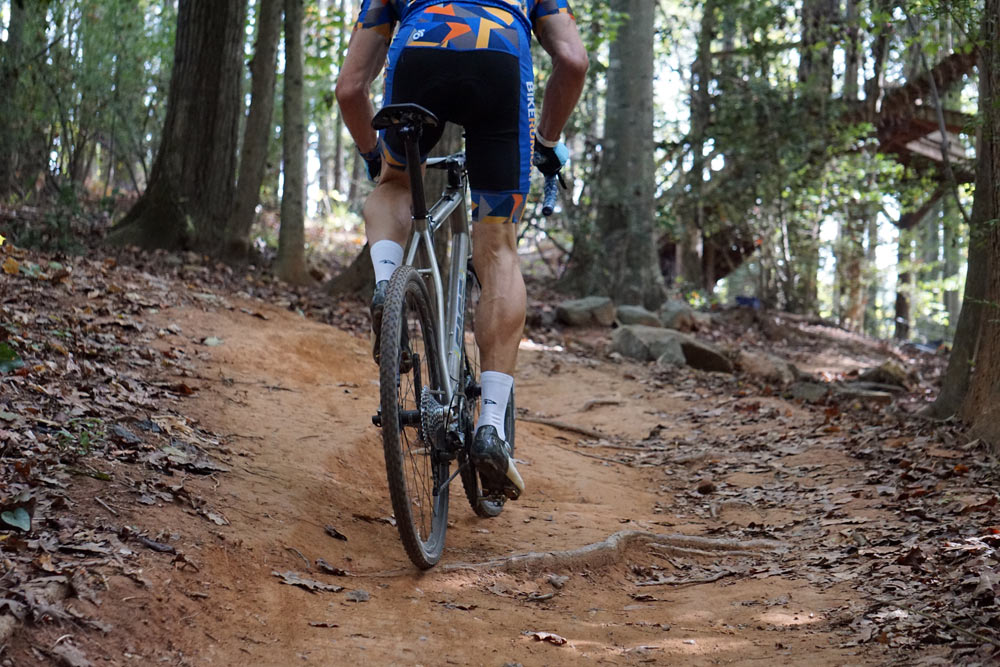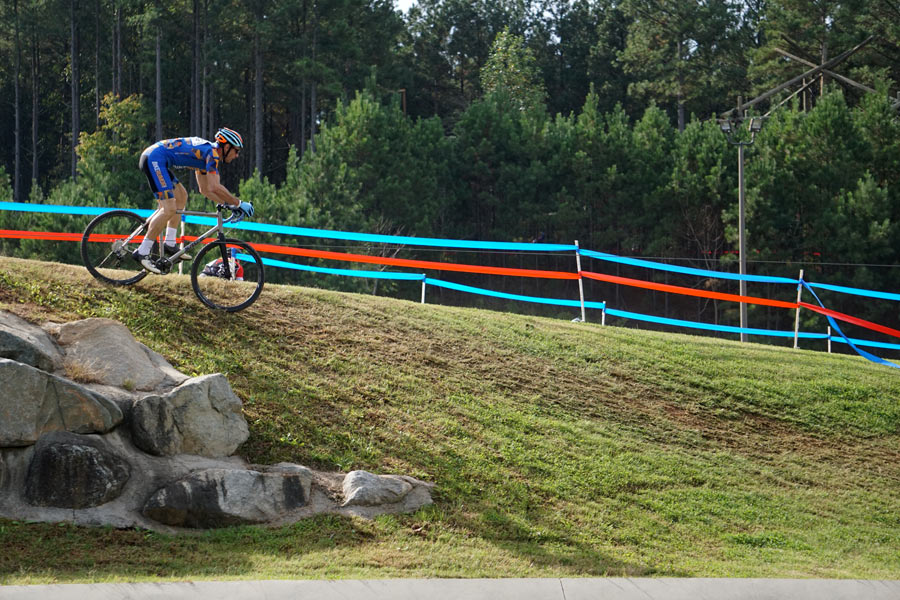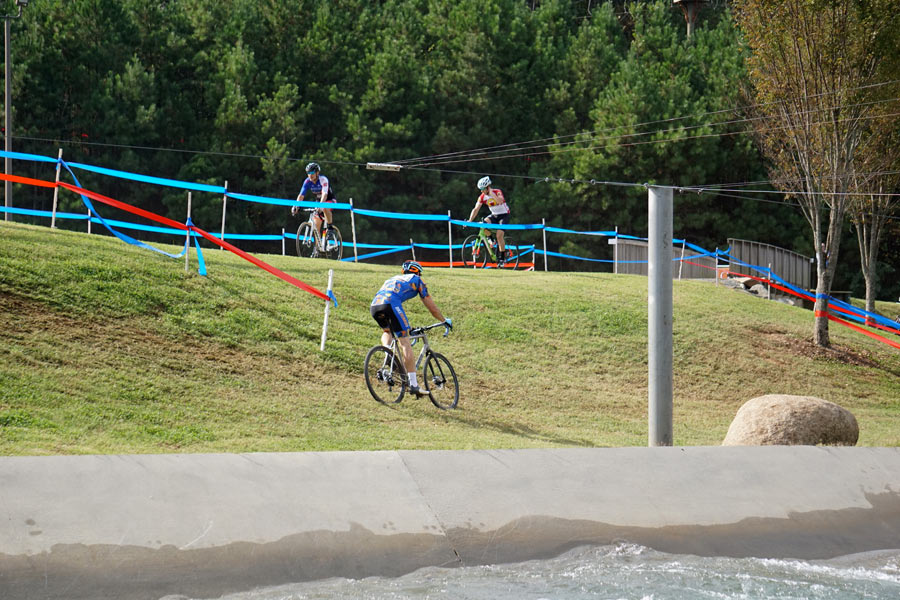This season, I called in the big guns, looking for cyclocross bikes actually made for cyclocross racing, not a versatile something-or-other that could work for ‘cross but also for gravel and touring. Bike No. 1 on the list? The all-new Sage Cycles PDXCX, a titanium cyclocross racer hailing from America’s capital of ‘cross, Portland. It debuted at Sea Otter Classic this year and is made in the USA of 3/2.5 ti with a bi-ovalized down tube and their patented Cable Clip System to run everything tight.
The PDXCX is designed for “the tight, wet, technical” terrain of northwestern cyclocross racing that Portland is known for. As such, it’s shaped and angled for turning quickly and getting up and over crud.
It’s sold as a frame-only for $2,900, or as a frameset with ENVE CX Disc fork and Chris King headset for $3,652. Complete bikes start at $5,704 with a SRAM Rival mechanical group. Sage’s website lets you build out the bike exactly as you want, with tons of component, drivetrain and spec options. The bike shown here would end up around $7,500 or so.
Sage founder Dave Rosen put all cable and hose runs along the top side of the top tube to keep them as far away from the mud as possible.
His Cable Clip System uses swappable alloy cable stops that bolt into the frame to accommodate shift cables. For 1x groups, there’s a single-stop design, and for 2x groups, there’s a double stop. For Di2/EPS wired shifting, he makes a special pass-through rivnut bolt that lets the wire pass though, then snakes backward to run down the head tube and then down the seat tube to reach the derailleurs.
The brake hose/housing clips to fixed mounts welded to the top tube, which is really my only gripe with this frame. I tend to rub my knees on the top tube as I ride, and the plastic clip that held the hose in place continually scraped me. I removed it, and that reduced the issue, but the edges of the metal mount still brushed my knee occasionally. Were this my own bike, I’d file down the mount’s edges to remove any corners, then either use thin wire to secure the hose to it, or just run a strip of electrical tape around the cable and top tube. Elegant, I know. I’m hoping Dave moves the cable mount ~10º upward on future models, which should rectify the situation.
Frames use a standard threaded BSA bottom bracket.
The backside of the seat tube provides the roundabout cable mount for mechanical systems and the Di2 port. It also gets fender mounts on the back of the chainstay bridge, as well as streamlined lower fender strut mounts on the outside of the chainstays:
It’s a 12×142 thru axle rear end with Breezer-style dropouts that keep the stays running full diameter all the way to the axle.
Both the fork and the frame will take a 140mm or 160mm rotor.
The seat tube uses a thinner wall tube most of the way up, with a sleeved, thicker tube section at the top to fit and provide the structural integrity needed by the seatpost. It also shows off the weld quality…consistently smooth and well done across the entire frame.
Tire clearance is claimed at 42mm max, which seems OK based on the 700×33 Clement PDX included on the test bike, buuuut…
…at the chainstays, though, that might not be the case. Clearance looks tight, but on the HED Ardennes+ LT rims, they measure an actual 37.5mm. Personally, I don’t think I’d run anything wider than an actual 38.
My size 58 test bike, built with SRAM Force 1, a 3T alloy cockpit with carbon seatpost, Specialized Power saddle, HED Ardennes alloy wheels with Clement PDX tubeless tires (set up tubeless), ENVE CX disc thru-axle fork and Chris King headset came in at 18lb 14oz (8.56kg).
SAGE PDXCX CYCLOCROSS BIKE RIDE REVIEW
The PDXCX rides fast, with the typically rough-but-manageable feel of titanium. It has big chainstays and seatstays, so there’s not much in the way of flex or compliance, leaving the seatpost to pick up the slack. But this is racing after all, and a good titanium frame should last you a lifetime.
Power transmission is direct and efficient. No creaking, squeaking or other ailments have been observed over the past couple months of riding, training and racing…and that’s despite leaving it outdoors dirty and in varying states of wetness for a few straight days following a lightly grassy/muddy race. A good scrubbing later (with a little extra attention paid to the chain) and it was good as new. Aaahhh, titanium.
Riding the bike around for general fun or light training revealed nothing out of the ordinary. It handles predictably, rides smoothly and definitely goes where I pointed it. The bike is not one to take wide sweepers as gracefully as others, but shines in the tight, twisting turns of course tape and picking its way around competitors.
Looking strictly at the numbers, it took me a while to figure out why, exactly, it handles the way it does. Compared to the Specialized Crux, almost all of the key figures are nearly identical at the size 58 range. In fact, the Crux even has a longer fork rake, which would typically give it a shorter trail. But, because the head angle is a mere 0.25º steeper on the PDXCX, it ends up with a slightly shorter trail. Longer trail makes for a more stable bike, shorter equals snappier handling.
One other geometry figure that stood out is the BB drop. At just 60mm, it sits 7mm taller than the Crux, and 8mm taller than the Cannondale Super-X (which are the other two bikes I’m currently testing). This means I’m sitting higher on the bike, which means a higher center of gravity.
Put it all together, and on transitions like what’s shown in the two photos directly above, descending and rolling into a fast turn, especially off camber, took a little extra attention. But just a little. It’s not twitchy, it’s just not a bike I felt super comfortable leaning hard into a big turn. It also meant I buzzed the toe of my shoe on the front tire a couple times in a race. Not enough to be dangerous, but worth noting.
Everything plays to its strengths. It’s by design that the PDXCX does what it does, after all, it’s designed and made in the Northwest for those types of courses. It’ll work everywhere else, too, it just took a little getting used to.
If your tracks tend toward the tight and technical, or you need a little extra ground clearance, the new Sage PDXCX ‘cross bike could be the right race horse for your course.
